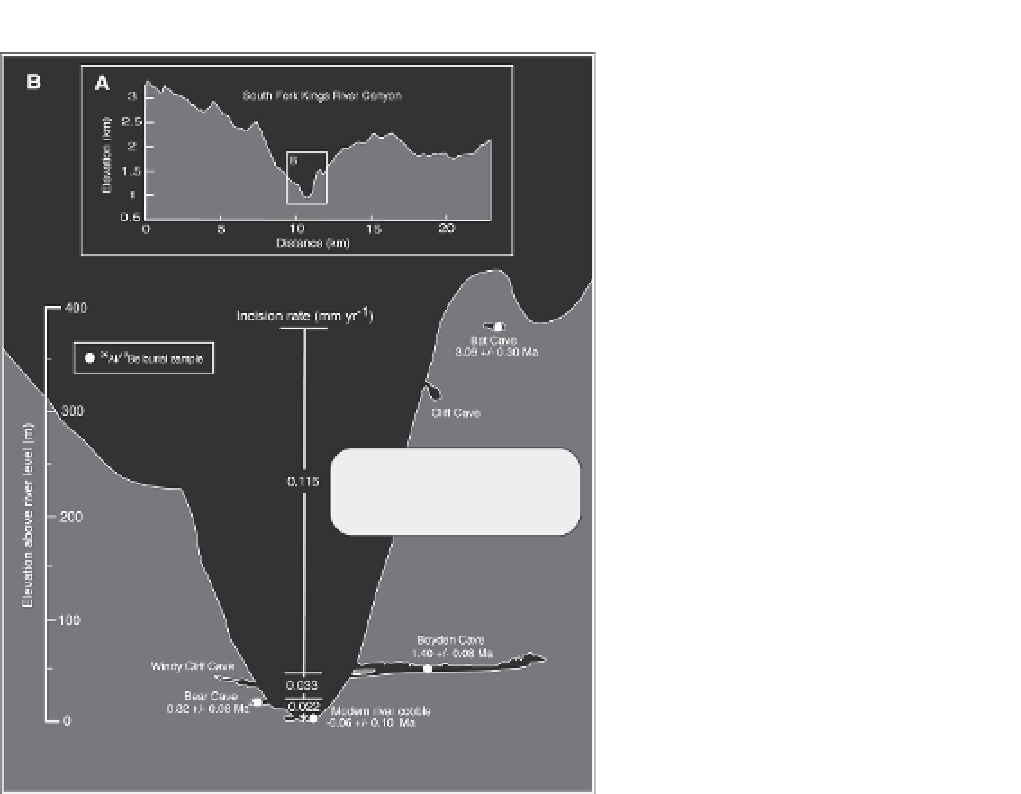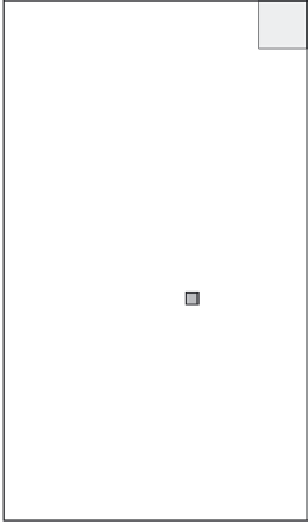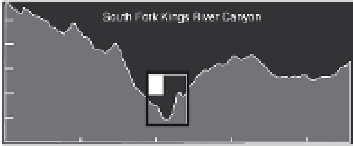Geology Reference
In-Depth Information
A
South Fork Kings
Canyon Topography
3
River Incision Histories
from Cosmogenic
Burial Ages in Caves
South Fork Kings River Canyon
2
B
1
0
5
10
15
20
C
Canyon Incision
Rates
Incision Rate (mm/yr)
B
South Fork
Kings
Yucca Creek
South Fork
Kaweah
400
400
Incision Rate (mm/yr)
Bat Cave
3.1±0.3 Ma
26
Al/
10
Be
burial sample
300
300
Burial Ages
versus Height
above Modern River
0.12
200
200
100
100
Boyden Cave
1.4±0.1 Ma
0.03
Bear Cave
0.3±0.1 Ma
0.02
Modern river
cobble
0.1±0.1 Ma
0
0
01234
Burial Age (Ma)
Fig. 3.21
Dating caves and estimating incision rates using the burial method.
A. Cross-section of the South Fork Kings River valley. B. Detail of canyon cross-section showing both locations of
caves dated using the burial method and the incision rates derived from elevation-age data. C. History of river
elevation deduced from the series of cave elevations and dates from nearby canyons in the southern Sierra Nevada.
These data indicate rapid incision from 3.1 to 1.4 Ma, followed by an order-of-magnitude slower incision toward the
present. Modified after Stock
et al
. (2004).
within the soil column can be used to constrain
the age of the surface. Given that the map of
rainout of meteoric
10
Be is now much better
constrained than in the early 1990s, and that
sample preparation of
10
Be targets from meteoric
samples is much less time-consuming, we will
likely see a resurgence of use of this method to
establish timing in the landscape (Willenbring
and von Blankenburg, 2010).
of the surface at that site. These production-rate
histories are difficult to know. Typical calibra-
tions rest on independent dates from surfaces,
such as glacially polished bedrock associated
with moraines that can be dated with
14
C (e.g.,
Nishiizumi
et al.
, 1989). Two cautions are war-
ranted: (i) these independent ages can be and
are being reassessed with new techniques at
new sites that may better constrain the true age
of the glacially polished surface (e.g., Clark
et al.
(1995); and (ii) production rates estimated
from these sites are, therefore, relevant to this
altitude and latitude and are averaged produc-
tion rates over the age of the sample. Use of
these production rates for dating other surfaces
Using cosmogenic nuclide dates
The numbers one extracts from cosmogenic
studies are, at best, only as good as the
knowledge of the production rates over the age



























































